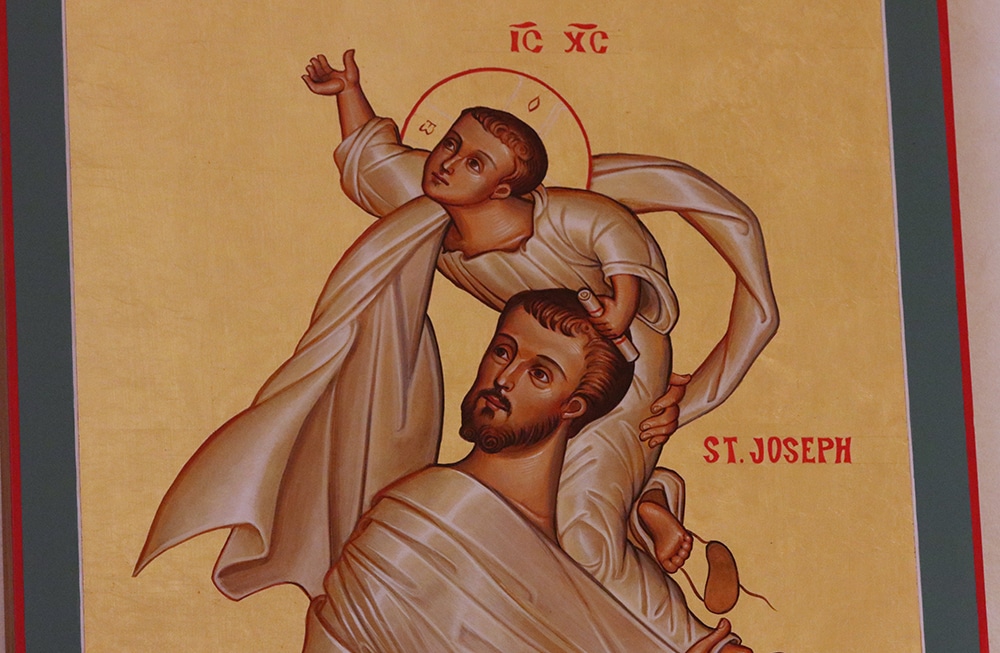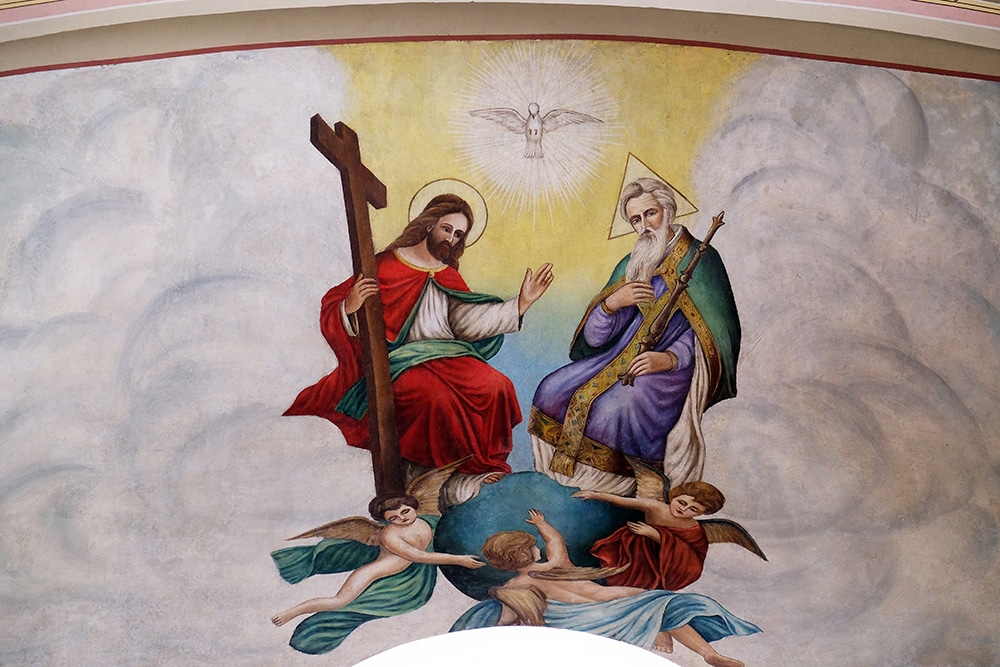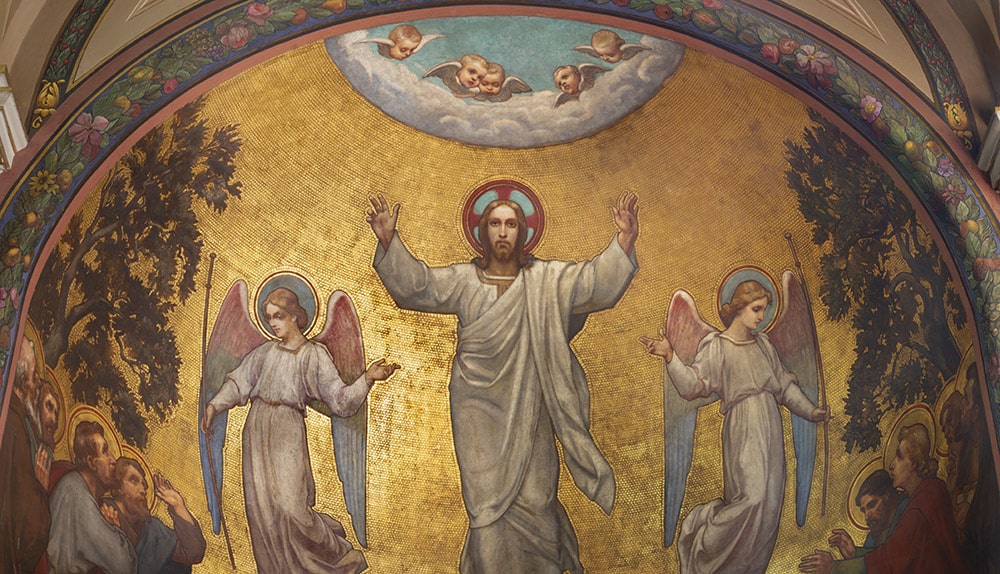 Front and center on our mantle at home this year stands a 17-inch statue of St. Joseph. He is holding hands with a young Jesus at his side, looking down at his son’s smiling face. The child Jesus, his left arm outstretched, his palm clasped with Joseph’s, and his sacred heart radiating from his chest, looks up and out. He is seemingly confident and joyful in the love of his father on Earth and of his Father in heaven.
Front and center on our mantle at home this year stands a 17-inch statue of St. Joseph. He is holding hands with a young Jesus at his side, looking down at his son’s smiling face. The child Jesus, his left arm outstretched, his palm clasped with Joseph’s, and his sacred heart radiating from his chest, looks up and out. He is seemingly confident and joyful in the love of his father on Earth and of his Father in heaven.
I am partial to art that depicts St. Joseph in relationship with Jesus, be it holding him or looking at him, treasuring this unexpected gift of joy from above. It’s a quiet mirror image of the same relationship to which each of us is called with Our Lord. In such depictions, St. Joseph, silent in Scripture, seems to find his voice as he basks in his vocation. He is portrayed as the Litany of St. Joseph proclaims him to be: the foster father of the Son of God, the diligent protector of Christ, the head of the Holy Family.
It was to that litany that Pope Francis on May 1, the optional memorial of St. Joseph the Worker, added seven new titles. The titles, like sacred art, offer us new opportunities to contemplate St. Joseph’s relationship with Christ and the Church. They are Custos Redemptoris (Protector of the Redeemer), Serve Christi (Servant of Christ), Minister salutis (Minister of salvation), Fulcimen in difficultatibus (Support in difficulty), Patrone exsulum (Patron of refugees), Patrone afflictorum (Patron of the afflicted) and Patrone pauperum (Patron of the poor). The phrases are drawn from mostly modern sources, including Pope St. Paul VI, Pope St. John Paul II and Pope Francis. Four of the titles stem from Francis’ apostolic letter, Patris Corde, which was published in 2020 “to increase our love for this great saint, to encourage us to implore his intercession and to imitate his virtues and his zeal.”
Visit our site for the Year of St. Joseph here.
Contemplating St. Joseph by way of these additional titles helps advance this mission. The invocation of Servant of Christ, in particular, helps us reflect upon the relationship of foster father and son in a new and effective way — a way that also, it turns out, is reflected in our statue. The hand that guides is also submissive. The face that protects is also attentive. The adult is at the service of the child, the one whose sacred heart already shows us the way of love.
The additions to the Litany of St. Joseph follow recent changes to another popular litany. In June 2020, three new invocations of the Blessed Virgin Mary were added to the traditional Litany of Loreto: Mother of Mercy, Mother of Hope and Solace of Migrants.
The changes to both devotions serve as an opportunity for Catholics to reacquaint ourselves with the powerful simplicity of these prayers, and help us to better reflect upon and emulate the relationships that Mary and Joseph had with their son.
The Litany of Loreto helps us to consider Mary as a perfect example of mercy and hope, as a mother most pure, chaste, amiable and admirable. The Litany of St. Joseph helps us to consider the foster father of Jesus as the hope of the sick, patron of the dying, terror of demons and protector of the Holy Church. Reciting them is similar to gazing upon works of sacred art. Through these prayers, we are able to more completely understand the roles of this holy couple in salvation history and consider how we can learn from them today.
In doing so, we, too, can grow in relationship with the one who captured their hearts and who seeks to capture ours. May Joseph and Mary continue to guide us to the outstretched arm of their son.
Gretchen R. Crowe is editorial director for periodicals at OSV. Follow her on Twitter @GretchenOSV.







